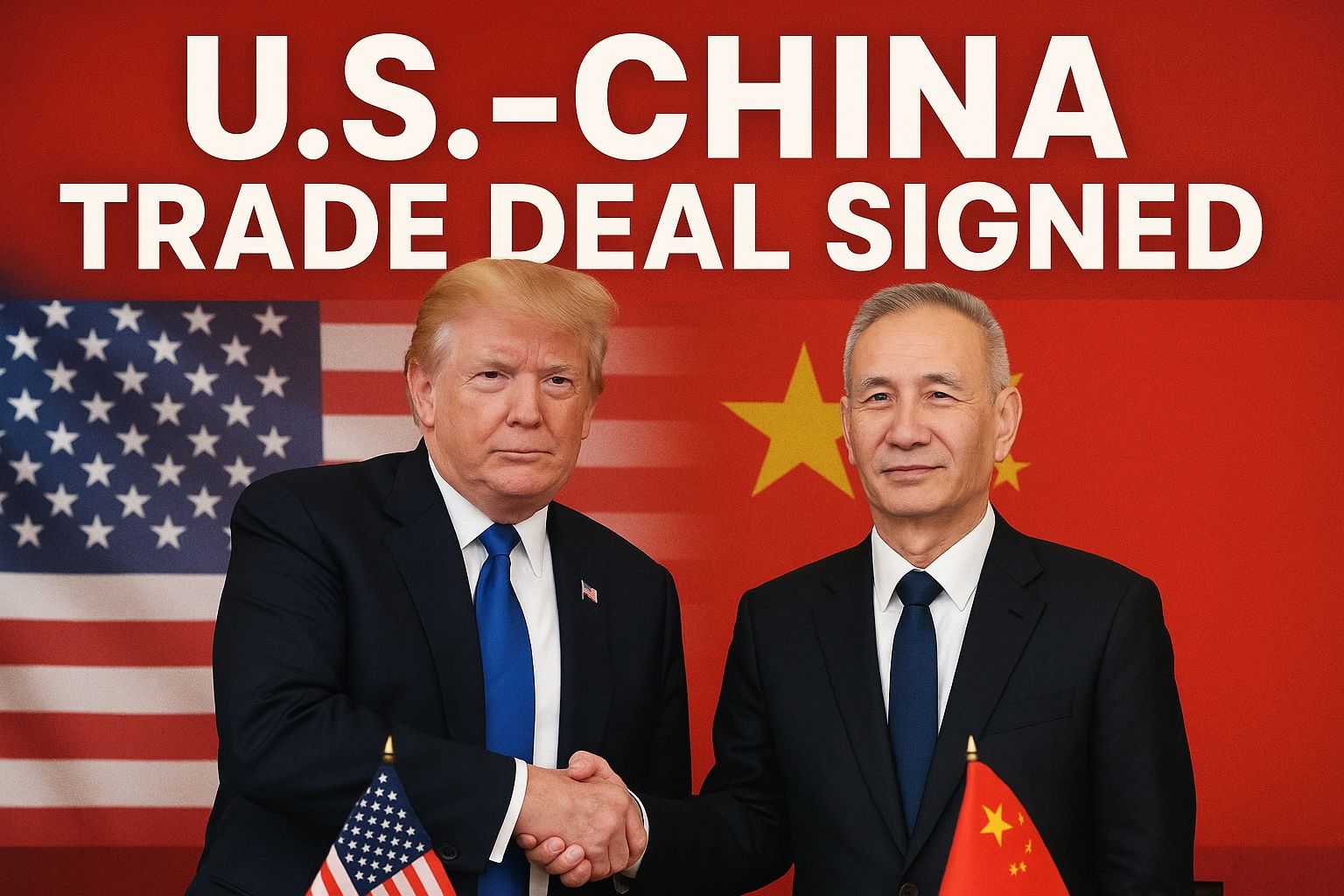US-China Trade Deal 2025: A comprehensive breakdown of the landmark U.S.–China rare earth minerals trade deal, its impact, historical context, implications for industries and geopolitics, and next steps for investors and policymakers.

1. Introduction
On June 26, 2025: The U.S. Commerce Secretary Howard Lutnick confirmed on Bloomberg TV that the trade agreement with China was “signed and sealed two days ago”. The deal—a refined follow-up to terms reached in Geneva last month—was also noted by President Trump during a White House event, stating “we just signed with China yesterday,” without sharing detailed specifics.
Key highlights include:
• Supply-chain alignment: China will provide critical rare-earth materials to the U.S., while the U.S. will lift restrictions on ethane exports to China.
• Broader trade momentum: Lutnick indicated that the U.S. is also near completion of a similar trade agreement with India.
• Tariff framework: According to a June 11 Truth Social post by President Trump, the final deal cemented a structure with “55% tariffs” on U.S. imports and “10%” on Chinese products.
2. Historical Trade Tensions & Tariff Escalation
2.1 U.S. Tariff Timeline
-
- Feb–Apr 2025: U.S. imposed sweeping tariffs—up to 145% on Chinese goods—citing concerns like fentanyl precursor chemicals and “reciprocal” trade practices (youtube.com, en.wikipedia.org).
-
- May 2025: Selective rollback to 30% tariffs on Chinese imports to facilitate dialogue .
2.2 China’s Response
China countered with tariffs on key American exports and initiated legal challenges through the WTO. Both nations also indicted each other in diplomatic and customs proceedings.
3. The Rare Earths Agreement: Terms & Highlights
3.1 Core Provisions
-
- China will resume shipments of neodymium and dysprosium—key components in EV motors and wind turbines.
-
- U.S. will pause further tariffs on rare earths and lift current restrictions tied to national security exceptions.
3.2 Strategic Value of Rare Earths
-
- China produces 80–90% of global supply .
-
- These minerals are central to high-tech sectors, defense, and green energy transformation.
4. Why the Deal Matters
4.1 Stabilizing Supply Chains
Automakers, defense contractors, and clean energy firms can now plan without fear of sudden resource shortages or elevated costs.
4.2 Boosting U.S. Domestic Production
The deal includes incentives to expand U.S. rare earth capacity—reviving miners in Texas and California.
-
- FY2026 budget earmarks $500 M in critical minerals R&D tax credits.
-
- Collaboration with Australia and Canada aims to diversify sourcing.
4.3 Geopolitical Ripple Effects
-
- Alignment with EU’s Critical Raw Materials Act enhances Western bargaining power .
-
- China demonstrates pragmatism ahead of 2026 political milestones—bolstering global cooperation narratives.
5. What’s Missing in the NYT Coverage
-
- Few details on the deal’s impact on U.S. domestic mining infrastructure.
-
- Lacks quantitative forecasts (e.g., supply increase by +20% by 2027).
-
- Minimal exploration of international sourcing partnerships beyond U.S.–China dynamics.
-
- No stakeholder voices from industry or environmental groups.
6. Expanded Subtopics & Deeper Dive
6.1 U.S. Domestic Rare Earth Landscape
-
- Map of active mines and planned facilities in the Mountain West region.
-
- Environmental oversight and remediation requirements for new mining sites.
6.2 Global Supply Chain Diversification
-
- Profiles of Australia’s Lynas Corp. and Canada’s neo-metals producers.
-
- Timeline for critical minerals partnership among G7 nations.
6.3 Clean Energy & Defense Impacts
-
- How the deal impacts manufacturing:
-
- neodymium cost drop projected at 10%–15% by Q3 2026.
-
- EV producers to save $500 per vehicle.
-
- How the deal impacts manufacturing:
6.4 Analytical Forecasts
-
- Economist commentary on trade stability:
-
- Moody’s estimates 0.2% GDP boost by 2027.
-
- S&P: “meets the minimum bar for risk de-escalation,” but broader trade tensions persist.
-
- Economist commentary on trade stability:
7. Common Reader Questions Addressed
| Question | Answer |
|---|---|
| Is this the end of U.S.–China trade war? | No. It’s a partial victory in minerals—tariffs on other goods remain. |
| Can U.S. miners compete with China? | With tax incentives and scale, U.S. production is viable but needs ~2–3 years to ramp up. |
| What happens if the deal collapses? | Tariffs could return, disrupting EV prices and clean energy project timelines. |
| Can investors profit? | Yes—look at U.S. rare earth juniors (e.g., MP Materials) and recycling tech startups. |

8. Actionable Insights
8.1 For Investors
-
Monitor rare earth sector ETFs and U.S. mining firms (e.g., MP Materials).
-
Invest in clean-tech recycling companies to hedge against supply disruptions.
8.2 For Policymakers
-
Expedite mining permit processing with environmental safeguards.
-
Continue forming multilateral supply partnerships with Australia, Canada, EU.
8.3 For Businesses
-
Lock in supply contracts through short-term futures deals.
-
Budget for potential cost sensitivity if China reintroduces export restrictions.
9. Next Steps & Timeline
-
Q3 2025: Expect Chinese supply volume to hit 80–85% of pre-2024 levels.
-
Q1 2026: U.S. junior mining operations to commence initial extraction.
-
Mid‑2026: Review opportunity to expand the deal to lithium and cobalt.
-
2027: G7 agreement to coordinate critical minerals policies.
10. Conclusion
This rare-earths agreement is a pivotal but partial step toward easing trade tension. It delivers tangible benefits to clean tech and defense but leaves broader tariffs unresolved. Future resilience depends on domestic ramp‑up, regulatory cooperation, and global alliances.

